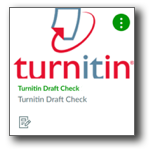Welcome to Stage 2, Part 2 of the Academic Writing Guide.
Producing a Sentence Outline
You can work through the pages in this Stage at your own pace, taking a break whenever you need to. It is not a good idea to try and complete a whole Stage in one go, however, so always follow the advice to Take A Break half way through.
So far you have analysed your title and searched for suitable sources, as well as producing an annotated bibliography to help you assess their usefulness. In the process you have given a lot of thought to your thesis statement and what you want to argue. In this next Stage of the Academic Writing Guide you will produce a plan for your essay, while continuing to focus on your argument. Good planning can help you present your evidence in the best possible way. This is the last Stage that deals with pre-writing, as you will begin drafting your essay in the next Stage.
Instead of being in note form, a sentence outline generally consists of full sentences. Writing in full sentences makes the next stage (writing the draft) an easier and faster process, and also allows your tutor to read more easily and give formative feedback. A sentence outline gives you a step-by-step overview of your essay, and is something you can return to while writing if you lose track of what to say next. It can also help you develop your introduction and conclusion and make the connection between them clear, and should help you decide how to present your evidence in the best possible way. Your sentence outline should be written in clear, simple language. It does not have to be too detailed, but should include:
• your argument (summarised in the thesis statement)
• a sentence or two detailing what you will include in the introduction and in the conclusion
• a sentence to explain the focus point of each paragraph
• a sentence that gives your own interpretation/analysis of each point and counterpoint
• an indication of where you will use your supporting evidence
• a sentence or two detailing what you will include in the introduction and in the conclusion
• a sentence to explain the focus point of each paragraph
• a sentence that gives your own interpretation/analysis of each point and counterpoint
• an indication of where you will use your supporting evidence
|
Nagi: Having a strong conclusion and a strong introduction that really help your reader know what you're about to argue and what you're about to talk about.
|
Watch the interview with Nagi, one of our former Foundation Year students, who worked through the AWG and is reflecting on the aspect of academic writing that he always kept in mind when drafting an essay.
As you listen, notice the reason he gives for having a strong introduction and conclusion.
Access the pdf transcript here.
Nagri Driias
Now graduated from the University of sussex with a BA in International Relations and Development

Task
Access the pdf and read the draft Sentence Outline for a 1,500-word discursive essay that the writer has started to prepare for the worked essay title on genetics and race in the early twentieth century. Make notes as you read. 
Quiz
Use your notes to complete the quiz Activity below.Remember, quizzes in this Guide are designed to help you recall and process information.
The scores are not recorded and do not influence your grades for the Academic Development module.
Question 1: What percentage of the word count does the introduction take?
Question 2: What percentage of the word count does the conclusion take?
Question 3: What should the introduction include (tick all that apply)?
Question 4: Is the following statement true or false? In the main body of the essay the writing should be organised into paragraphs.
Question 5: What do most paragraphs begin with?
Question 6: Is the following statement true or false? In a discursive essay, the main body should not acknowledge the counter-argument.
Question 7: Is the following statement true or false? In a discursive essay the writer should not highlight the relative weakness of the counter-argument.
Question 8: What three things should the body of the essay do to maintain the line of argument?
Question 9: What is the function of the conclusion
|

Idea

Stop and reflect
Introductions
As part of a sentence outline it is important to include a draft version of your introduction and conclusion to help you understand what your central argument will be and how it will be argued.
Listen to the video entitled 'What do I put in an introduction' (4 minutes), where the University’s Royal Literary Fund (RLF) Fellow talks about what to include in the introduction to your essay.
|
Hello. I'm Jackie Wills I've been RLF fellow at Sussex since September 2010. I see up to six students a day with questions about their writing and I'm often asked ‘what do I put in an introduction?’ So, here's a short guide. Your introduction is where you set up your store, it's where you're totally clear about your argument and how you're developing it.
Think of it as a statement of opinion or theory, the place where results are revealed. It's where you identify the issues you're going to explore and where you show you've understood the title. A good introduction inspires the reader because it approaches the title or question confidently. If you imagine an essay as a conversation, your introduction is where you tell a friend you haven't seen for years the really important news. As the conversation goes on you elaborate on your news as you would in the body of the essay and by the end of the conversation you're more reflective – this is the role of the conclusion. The style of your introduction will vary according to whether you're writing a science or humanities essay, but its function is essentially the same depending on your subject; it's the place to summarise your argument and conclusions or reveal your findings, identify the stance you're taking and how your argument fits into the critical landscape. If you use a quote make it relevant and not too long. If your argument is based on a specific theory, make this clear and elaborate on it in the body. Identify major trends or factions that contribute to the debate you're engaging with. Make your methodology clear. An introduction needs to be 10% of the essay’s total word count. Now there are two common mistakes in an introduction: one is to repeat the essay title in your first sentence. You don't need to do this. If your title says critically analyse X you don't need to write ‘I am going to critically analyse X’. The second mistake is to save your big ideas for the conclusion. This isn't a novel – you don't need to keep the plot secret. You need to let the reader know what the big ideas are from the start, and the place for these ideas is the introduction. This is why it's important to plan and know your argument before you start writing. Then you're in no doubt about what to put in your introduction. It will lead the reader naturally into the body of your essay because you've already worked out the structure, and the body leads smoothly into the conclusion. And it's worth remembering you don't have to write your introduction first – in fact, writers often compose it at the end. Certainly be prepared to redraft it if you find you've moved away from your plan, but regardless of whether you write it first or last the introduction is your chance to draw a reader in. |

Quiz
Access this PDF of the video transcript and as you listen to the video fill in the 13 gaps with the key terms. (You can do this direct on the online form or print it off and write in your answers).
Remember, quizzes in this Guide are designed to help you recall and process information.
The scores are not recorded and do not influence your grades for the Academic Development module.

Task
Open this link to the RLF site. Scroll to the bottom of the page and read the 3 sample introductions. As you read think about what they are doing and how successfully they are doing it. Begin thinking about what to include in your own introduction. Conclusions
Listen to the short video entitled 'What do I put in a conclusion' (3.5 minutes), where the RLF Fellow talks about what to include in the conclusion to your essay.
|
Hello, I'm Jackie wills. I've been RL Fellow at Sussex since September 2010. I see up to six students a day with questions about their writing, and I'm often asked ‘what do I put in a Conclusion?’ So here's a short guide.
A good conclusion gives a sense of completion to your essay. It's where you reflect on the evidence you've presented and how it supports the question or title generally. A conclusion should be about 10% of the total word count, although it can be slightly shorter. Sometimes it's tricky to get a conclusion right because this is a much quieter part of your essay than the introduction. It's a bit like winding down a conversation. It's useful to list some of your options for the conclusion to avoid simply repeating the introduction or summarizing the whole of your essay. Once you've thought about these options go for the strongest. So you could revisit the question and highlight one or two of your key points; or your focus might be on gaps in the evidence research or critical thinking; you could concentrate on the way forward; or speculate about future developments in the debate or in the research you've reviewed; perhaps you could suggest areas where more research is needed and what course that research could take. If you have doubts about the strength of theories and ideas you've been exploring, your conclusion might revisit these areas of confusion and suggest how they might be resolved. If your evidence strongly supports your argument, again you can point this out. You shouldn't put new material in the conclusion. Make sure there are at least some references in the body of your essay to the point you're making, but there might be an issue you didn't elaborate on which provides you with a focus for the conclusion. One common mistake people make in conclusions is thinking this is where you put your results or argument. Your big ideas must go in the introduction. If, when you read over your conclusion you find you've arrived at some important ideas that you haven't put in the introduction go back and redraft, making sure that you have enough evidence to support them in the body. Another mistake is thinking a conclusion is the place to introduce a personal opinion for the first time. It's not. If your opinion is valid it forms part of your argument. So a conclusion is your chance to leave the reader with a clear idea of what you've made of your research. Make the most of this opportunity to reflect on material you've spent so much time with, so your reader feels part of the process of inquiry and ends your essay satisfied and interested. |

Quiz
Access this PDF of the video transcript and as you listen to the video fill in the 10 gaps with the key terms. (You can do this direct on the online form or print it off and write in your answers).
Remember, quizzes in this Guide are designed to help you recall and process information.
The scores are not recorded and do not influence your grades for the Academic Development module.

Task
Open this link to the RLF site and read about what a good conclusion should and shouldn’t do. Start thinking about the relationship between the introduction and conclusion in your own essay. 
Idea

Task
Open these links to find academic phrases for use in the introduction and the conclusion of your essay, for defining your terms, and for referring to sources:
Being aware of counter-arguments is like defending yourself against attack. Your argument is stronger when you acknowledge other points of view and explain why you are not persuaded by them (a process known as the rebuttal). You don’t need to give them equal coverage, and you probably won’t cover all of them, but by identifying them you demonstrate that you know your subject. It is important to consider what your counter-arguments or alternative perspectives might be at this stage, to support your planning process. You may decide that you need to read more, or re-evaluate some of the sources that you have read and consider whether you have enough support for these arguments/perspectives.
Thinking about the order, and relative importance of each topic, how do you decide where to place your counter-argument? It can be powerful to present the counter-argument in your introduction, especially if you are arguing against the most commonly held view. In a discursive essay it’s common to place the counter-argument after the main points that support your thesis, but before the conclusion. It may prove confusing for your reader if you present some points in support of the thesis, then the main counter-argument and then more points in support of your thesis. Think about your own essay and decide where the best place for the counter-argument(s) is/are. The organisation you choose should be whichever one best showcases your ideas. Describe your reasoning in your assessed reflective writing at the end of this Stage.

Activity
Open this link to the University of Sussex Skills Hub and read about ways to evaluate arguments in your own essay, and then open this link to complete the practice activity which requires you to evaluate three more arguments.Turnitin is the name of the software used at the University of Sussex for providing marks and feedback and checking for originality on text-based assessments. Turnitin can be useful for checking drafts of your work to make sure you have referenced your sources correctly.
Submitting draft documents to Turnitin
You can use the Turnitin Draft Check site in Canvas to create a Turnitin Similarity Report without uploading your file as an assignment submission. This can be useful if you want to check for similarity before submitting an assignment or for documents which are not for a Turnitin assignment.
Documents uploaded to the Turnitin Draft Check site will not count as a submission, will not be stored for matching against future documents, and will not be seen by your marker or tutor unless you choose to share them.
Turnitin will put your draft through an originality checking process. This process compares the text within the submitted document against a vast database of online sources and then presents the results as an online Originality Report. The feedback this report provides is a useful aid to help you identify sources of unoriginal text, or highlight ways in which you have not used your sources well, and can be used as a guide to show you where you need to improve referencing skills and/or paraphrasing.
Turnitin also produces a Similarity Index. This is a score which represents the percentage of matched text in the Originality Report against the volume of overall text contained in the submitted document. Both the Originality Report and the Similarity Index can help you identify whether you have used your sources well in your essay, and whether you need to think more about the way you have or haven’t referenced them.
Watch the video (3.5mins) that explains more about how to understand and interpret Turnitin similarity scores.
| Turnitin Similarity
e-submission and e-feedback resources |

Idea
 |
When you have submitted your draft to Turnitin Draft Check download and save the resulting Similarity Report to your computer so that you can submit the report and the essay together. N.B. It can take anywhere from a few seconds to a whole day for your Similarity Report to be returned, depending on how busy the Turnitin site is. You need to plan ahead, so that you don't miss the deadline for submitting your assessed work. You can find out more about submitting work to Turnitin and Canvas on the Student Hub. |
All Sussex students have 1 Terabyte (1TB) of secure file storage with OneDrive. Find out How to install OneDrive on your computer or device here.

Assessment
This is the third of four assessments that you will complete in this Stage of the Guide
Using the sub-headings from the worked essay sentence outline (reproduced below for reference) as an example, create a new sentence outline for your essay that includes:
• short introduction that includes background information, your thesis statement (from assessed task 1 in this stage), and a plan of what will be discussed in the essay
• a series of sections that make up the main body. In each section you need to briefly write the main argument(s) you want to make, as well as showing how you are going to prove or support these points, with reference to source material.
• a section that details a counter-argument or alternative perspective to the argument(s) you have made in the previous sections. This also needs to be supported by source material.
• a conclusion that re-states your main arguments and points.
• a series of sections that make up the main body. In each section you need to briefly write the main argument(s) you want to make, as well as showing how you are going to prove or support these points, with reference to source material.
• a section that details a counter-argument or alternative perspective to the argument(s) you have made in the previous sections. This also needs to be supported by source material.
• a conclusion that re-states your main arguments and points.
All Sussex students have 1 Terabyte (1TB) of secure file storage with OneDrive. Find out How to install OneDrive on your computer or device here.

Task
Click here to access a pdf of the sentence outline for the example essay
You can access the following graphic-organiser to help you create this assessed task. When you have finished, save it to your computer. At the end of this stage you will transfer your answer to the template provided and combine all of your assessments into one document that will then be uploaded to a central assessment point (more information later in this stage).

Help
If you need any help with any aspect of the Academic Writing Guide, or have any questions about this assessment, call in to one of the voluntary drop-in sessions. You can find information about the drop-ins on your Canvas site.
An Academic Development tutor will be able to offer you one-to-one support and advice.

Assessment
This is the fourth of five assessments that you will complete for this stage of the Guide.
• In the process of completing this assignment I learned…
• What I realised about academic writing was
• What I found most difficult was…
• I think the strength of this submission is…
• In order to improve future pieces of academic writing I will attempt to…
You can write your reflective paragraph on the AWG Stage 2 template found on the Week 11 Canvas page.
• What I realised about academic writing was
• What I found most difficult was…
• I think the strength of this submission is…
• In order to improve future pieces of academic writing I will attempt to…
All Sussex students have 1 Terabyte (1TB) of secure file storage with OneDrive. Find out How to install OneDrive on your computer or device here.

Assessment
This is the fifth (and final) assessed task for this stage of the Guide.
• Once you have finished all of Stage 2 assessments (Part 1 and Part 2), upload the document to the Turnitin Draft Check Site on your Canvas Dashboard.
• You will have to revisit this site later to download your Turnitin Similarity Report.
• Save this report and upload it as a separate document along with the assessment for stage 2 to the ‘Assignments’ section of your Canvas site. Your AD tutor will help you interpret the report in the feedback tutorial in semester two.
• You will have to revisit this site later to download your Turnitin Similarity Report.
• Save this report and upload it as a separate document along with the assessment for stage 2 to the ‘Assignments’ section of your Canvas site. Your AD tutor will help you interpret the report in the feedback tutorial in semester two.
All Sussex students have 1 Terabyte (1TB) of secure file storage with OneDrive. Find out How to install OneDrive on your computer or device here.
Here is a reminder of all of the assessed tasks that you should already have completed in this stage.

Assessment 1
Produce a thesis statement for your essay question, detailing the argument you are going to make in your essay.

Assessment 2
Produce an annotated bibliography for the 5 sources you will use in your essay (in addition to the core texts) that includes:
• a summary of the main line of argument of each source
• critical evaluation of the content
• accurate bibliographic reference list entries for all sources
• critical evaluation of the content
• accurate bibliographic reference list entries for all sources

Assessment 3
Produce a sentence outline/plan for your essay that includes:
• approximate word count plans for different sections
• links to supporting source material
• an introduction and conclusion
• an argument(s) showing a different perspective(s) or counter-argument(s)
• links to supporting source material
• an introduction and conclusion
• an argument(s) showing a different perspective(s) or counter-argument(s)

Assessment 4
Write a short reflection on what you have learned from completing this stage of the Guide.

Assessment 5
Upload the draft Turnitin Similarity Report together with your essay to the ‘Assignments’ section of your Canvas site.

Task
Go to the Week 11 page of your Canvas site and find the AWG Stage 2 Template. Transfer all of your answers to the correct places. Also make sure to add your name and student number to the front of the sheet. Once you have written all of your answers onto this template, you will need to upload your work to the ‘Assignments’ page in Canvas.
Notes on Submissions
You are responsible for submitting your work on time and will receive a penalty if you do not. Work submitted more than 7 days late will not be marked. This will have an impact on the final mark for your assessed portfolio. Please note that you are required to submit to the published submission point, and we cannot accept submissions by email or by hand. Click on the link to the Academic Development Gateway site to submit your assessed work.

Help
If you need any help with any aspect of the Online Academic Writing Guide, or have any questions about this assessment, call in to one of the voluntary drop-in sessions (they show up as 'Revision Q and A' in your timetable).
An Academic Development tutor will be able to offer you one-to-one support and advice.

Now have a BREAK
It's a good time to stop and reflect before moving on to Stage 3 Part 1 - Writing a Draft.
| Back | Now you have completed the second part of Stage 2 move on to Stage 3 Part 1 | Next |
Home |
Glossary |
About us |
